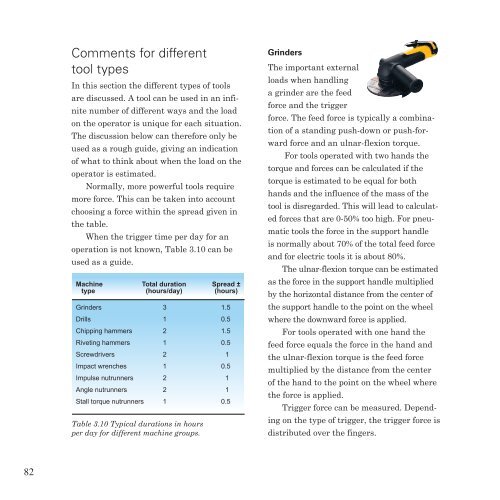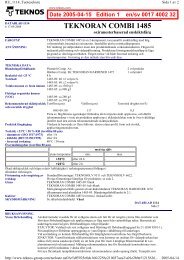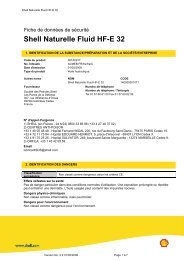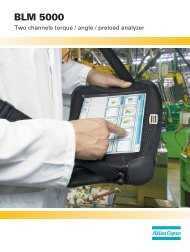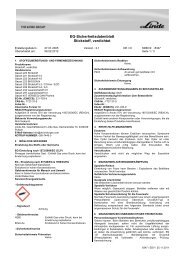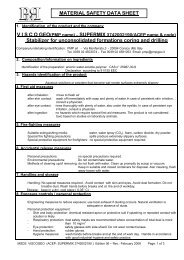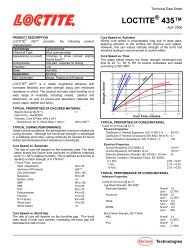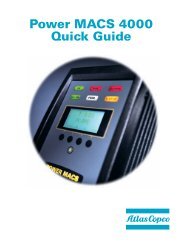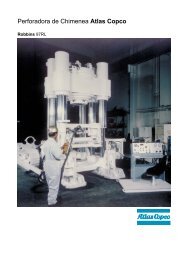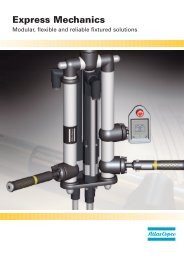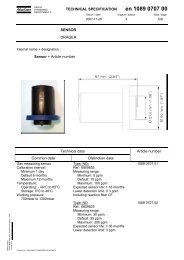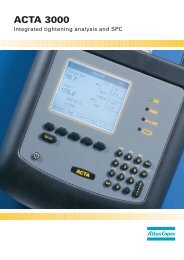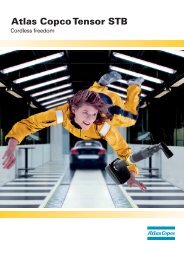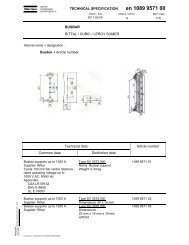Ergonomics - Atlas Copco
Ergonomics - Atlas Copco
Ergonomics - Atlas Copco
You also want an ePaper? Increase the reach of your titles
YUMPU automatically turns print PDFs into web optimized ePapers that Google loves.
82<br />
Comments for different<br />
tool types<br />
In this section the different types of tools<br />
are discussed. A tool can be used in an infi-<br />
nite number of different ways and the load<br />
on the operator is unique for each situation.<br />
The discussion below can therefore only be<br />
used as a rough guide, giving an indication<br />
of what to think about when the load on the<br />
operator is estimated.<br />
Normally, more powerful tools require<br />
more force. This can be taken into account<br />
choosing a force within the spread given in<br />
the table.<br />
When the trigger time per day for an<br />
operation is not known, Table 3.10 can be<br />
used as a guide.<br />
Machine Total duration Spread ±<br />
type (hours/day) (hours)<br />
Grinders 3 1.5<br />
Drills 1 0.5<br />
Chipping hammers 2 1.5<br />
Riveting hammers 1 0.5<br />
Screwdrivers 2 1<br />
Impact wrenches 1 0.5<br />
Impulse nutrunners 2 1<br />
Angle nutrunners 2 1<br />
Stall torque nutrunners 1 0.5<br />
Table 3.10 Typical durations in hours<br />
per day for different machine groups.<br />
Grinders<br />
The important external<br />
loads when handling<br />
a grinder are the feed<br />
force and the trigger<br />
force. The feed force is typically a combina-<br />
tion of a standing push-down or push-for-<br />
ward force and an ulnar-flexion torque.<br />
For tools operated with two hands the<br />
torque and forces can be calculated if the<br />
torque is estimated to be equal for both<br />
hands and the influence of the mass of the<br />
tool is disregarded. This will lead to calculat-<br />
ed forces that are 0-50% too high. For pneu-<br />
matic tools the force in the support handle<br />
is normally about 70% of the total feed force<br />
and for electric tools it is about 80%.<br />
The ulnar-flexion torque can be estimated<br />
as the force in the support handle multiplied<br />
by the horizontal distance from the center of<br />
the support handle to the point on the wheel<br />
where the downward force is applied.<br />
For tools operated with one hand the<br />
feed force equals the force in the hand and<br />
the ulnar-flexion torque is the feed force<br />
multiplied by the distance from the center<br />
of the hand to the point on the wheel where<br />
the force is applied.<br />
Trigger force can be measured. Depend-<br />
ing on the type of trigger, the trigger force is<br />
distributed over the fingers.


